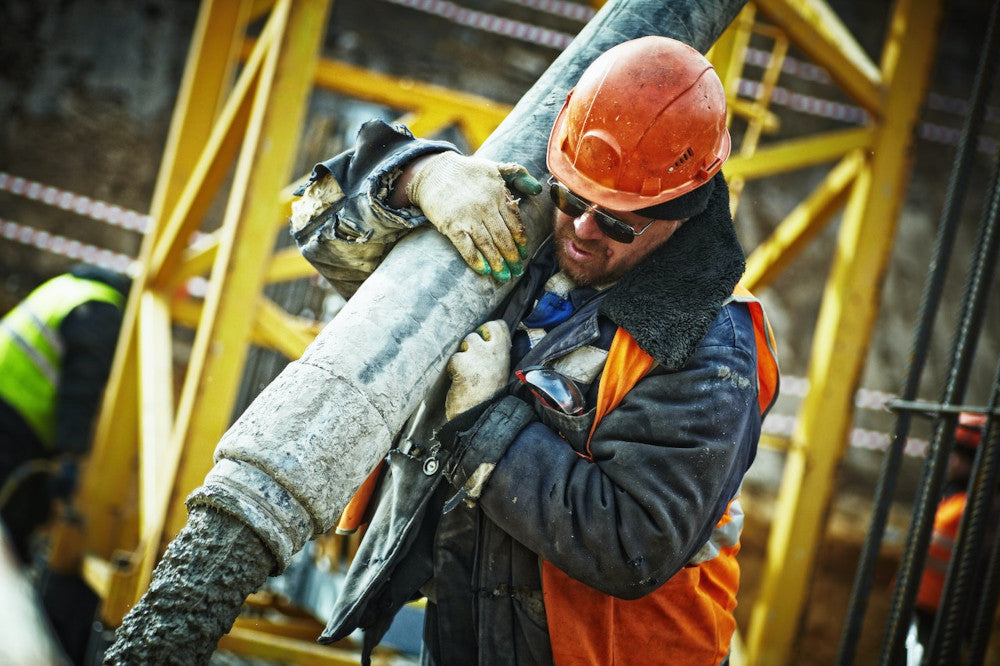
Construction workers wear durable, practical clothing that provides protection such as jeans, work boots, and hard hats. Hi-Vis vests help keep constitution workers aware of each other in dangerous work environments. Depending on the type of work they do, some construction workers also wear other protective clothing such as face shields, safety glasses, or flame-resistant suits.
Because of the hard physical labor involved in many construction jobs, most construction workers look for durable, practical clothing like t-shirts and jeans that can get dirty on the job and allow easy cleaning in the washing machine. The exception to this is that contractors on a construction site often wear business-casual clothing such as button-up shirts and khakis, though they do still wear hard hats.
Panaprium is independent and reader supported. If you buy something through our link, we may earn a commission. If you can, please support us on a monthly basis. It takes less than a minute to set up, and you will be making a big impact every single month. Thank you!
T-Shirt and Jeans

Construction workers often wear a T-shirt and jeans on site. A t-shirt offers a cool, comfortably stretchy top for people engaged in hard manual labor, while jeans offer a thick protective layer between the worker and wet concrete, barbed wire, or jagged metal beams.
When you search for jeans to wear for your next building project, make sure you find ethically made denim. Take a look at the 15 best recycled denim jeans brands here.
Button Shirt

On cooler days, many construction workers layer a button-up or flannel shirt over their t-shirt on the job site. Just like in any workplace, layering means that you can easily take off the top layer if you get too warm later on!
Contractors often wear business-casual button-up shirts paired with practical khakis on the site as well. This allows the contractor to look professional while inspecting or touring the site. Contractors interacting with customers may even wear a shirt and tie, or a polo with the company logo embroidered on it. You can find the 15 best ethical button-up shirts here.
Hoodie

Another practical, almost universal garment you see on a lot of construction sites is the versatile hoodie. Hoodies with their loose, roomy shape, stretchy fabric, and fuzzy interior offer both warmth and ease of movement for construction workers. Plus, wearing a plain or old hoodie means that the construction workers do not have to worry about staining or damaging the garment.
If you need a few more durable, warm, practical hoodies in your collection, take a look at the 20 best affordable and ethical hoodies here.
Coveralls

For certain types of building projects or specialty work on the site, construction workers may wear coveralls/overalls. Sometimes they pull on coveralls over another outfit like jeans and a tee, and sometimes the coveralls go over a shirt and take the place of pants. Coveralls simply provide a layer of protection over regular clothes. They work well for people working with paint, concrete, mortar, or other wet and possibly splattering materials.
Of course, you still need a comfortable shirt to wear with the coveralls! Take a look at the four best affordable American-made flannel shirts here.
Painter’s Paints

A popular variation on coveralls for some construction workers is a special type of garment called painter’s pants. These pants almost always feature thick white canvas and lots of extra pockets, as well as sewn-in loops for stashing paintbrushes and other tools. This style of construction apparel is usually worn as pullover pants, on top of shorts or jeans.
You can also find painter’s shorts, which also feature white canvas and many pockets. However, the shorts look less professional and provide less protection, so you do not see them on construction sites very often.
Just like with Coveralls, you will also still want a shirt like a t-shirt or flannel shirt beneath the painter’s pants. Take a look at the 20 most affordable hemp tees and tops here.
Hard Hat

Across the board, all construction workers wear hard hats. This essential piece of protective gear keeps construction workers safe from falling objects, electrical shocks in some cases, and moving objects. While many workers would choose this safety measure anyway, OSHA actually requires hard hats on most job sites, making the hard hat mandatory.
You can learn more about what the Occupational Safety and Health Administration has to say about hard hats here.
Steel-Toed Boots

When it comes to footwear, most construction workers go for sturdy, heavy boots. Workboots like steel-toed boots provide protection in case something heavy falls, or even from a stubbed toe if someone trips over a loose cinder block in the middle of a job site.
Finding ethically sourced, protective footwear may seem difficult, but this list of the 20 best affordable and sustainable boots brands will give you a good place to start!
Work Gloves

Depending on the kind of work they do, construction workers often wear sturdy work gloves on the job site as well. Work gloves can range from stretchy knit painter’s gloves to durable, thick gauntlets to protect workers from flying sparks while welding or sawing through metal.
In fact, the Infrastructure Solutions Group’s Occupational Health and Safety department states that wearing appropriate work gloves can reduce construction injuries by as much as 60%
Hi-Vis Vest

Lots of construction sites also require workers to wear hi-vis vests. This vest, often in neon shades of green or orange with reflective patches sewn into it, makes sure that workers will always see each other. This matters a lot when you have heavy equipment operating on site, or multiple teams of people moving things in varying directions around the site.
In some cases, hi-vis vests also make the public aware of construction workers. This safety measure helps keeps construction workers protected near roadways, for example. In some cases, OSHA also requires wearing these vests.
Protective Gear

Finally, construction workers often wear a variety of other specialty protective clothing depending on the kind of work they do. For example, a welder might wear a thick face shield and a full helmet, as well as heat-resistant clothing. A painter often wears a respirator to avoid breathing in dangerous fumes.
You can learn all about PPE for construction workers from Princeton University’s Environmental Health and Safety Department.
Was this article helpful to you? Please tell us what you liked or didn't like in the comments below.
About the Author: Hannah Cobb
What We're Up Against
Multinational corporations overproducing cheap products in the poorest countries.
Huge factories with sweatshop-like conditions underpaying workers.
Media conglomerates promoting unethical, unsustainable products.
Bad actors encouraging overconsumption through oblivious behavior.
- - - -
Thankfully, we've got our supporters, including you.
Panaprium is funded by readers like you who want to join us in our mission to make the world entirely sustainable.
If you can, please support us on a monthly basis. It takes less than a minute to set up, and you will be making a big impact every single month. Thank you.































0 comments